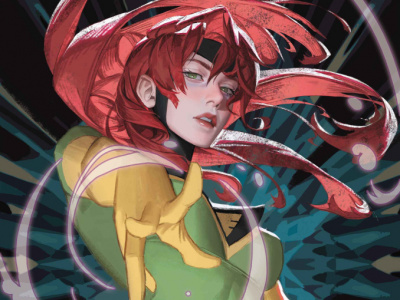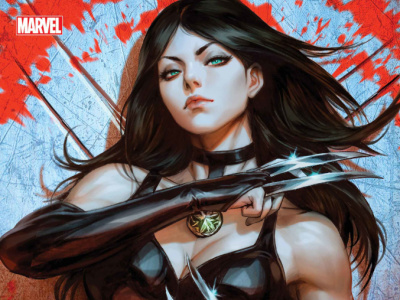
Breakdowns: Portrait of the Artist as a Young %@&*!
Pantheon
Art Spiegelman
October 2008
$27.50
ISBN: 978-0375423956
Page Count: 72 pg.
Format: Hardcover, 14.3” x 10.3”
Age Rating: Adult
ICv2 Rating: 5 Stars (out of 5)
Thirty years ago Breakdowns, the first book collecting Art Spiegelman’s comic strips was published in limited edition of 5,000 copies that took years to sell through despite the fact that a printing error rendered half the volumes un-saleable. Today Breakdowns is a rare book, the first collection of work by the artist who has done more than anyone to get the comics medium serious attention in bookstores, libraries and in the pages of literary reviews.
The title refers ambiguously to both the process of “breaking down” a narrative into a sequence of panels and to a mental breakdown suffered by the artist in the 1970s that was one of the catalysts that helped him create this groundbreaking work.
Breakdowns collects Spiegelman’s work from the 1970s and contains all of the stylistic and thematic preoccupations that have made him one of the most important artists working in the medium in our time. Spiegelman’s distinctive style, with its self-aware interplay of high and low art, its preoccupation with the infinitely malleable nature of the comics medium itself, its structural experimentation, its raw autobiographical elements, and its biting satirical examination of debased elements of pop culture such as soap operas, is on full display in this slim oversize hardcover.
The strips collected in Breakdowns range from a three-page comic that is the genesis of his 300-page masterwork Maus to the brooding expressionistic scratch boards of “Prisoner of the Hell Planet;” to the highly analytical “Cracking Jokes,” and to the medium-savvy in-jokes of “Zip-a-Tunes & Moire Melodies;” and from the autobiographical “Real Dreams” and “Don’t Get Around Much Anymore” to the deconstructed romance narratives of “Little Signs of Passion” and “Nervous Rex: The Malpractice Suite.” Breakdowns reaches its climax in the eight-page “Ace Hole Midget Detective,” the collection’s longest piece, an apotheosis of visual style and verbal cleverness that remains as funny (and well informed about the hardboiled detective genre) as this reviewer remembers it from more than 30 years ago.
Since Breakdowns has now become a “rare” book with a hefty price tag, a new edition in its original oversize format makes perfect sense, especially in light of the author’s increased fame and importance. But with more than 25 pages of new material including 20 pages of new autobiographical comics and a heavily illustrated and succinct “Afterword” from the artist, Pantheon’s new edition of Breakdowns is simply a must for anyone interested in Spiegelman’s work. The new comics that Spiegelman has added to the volume provide the autobiographical context for the reprint of the original Breakdowns anthology that follows.
“The Portrait of the Artist as a Young %@&*!” section serves as a revealing prelude to Breakdowns, explaining Spiegelman’s preoccupation with the medium that has obsessed him throughout his life. Spiegelman mines his youth, adolescence and student days to explain his preoccupation with cartooning while tipping his hat to creators such as Carl Barks, John Stanley, Basil Wolverton and most importantly Harvey Kurtzman. In his “Afterword” and in his new autobiographical comics, Spiegelman also pays homage to Ken Jacobs, a professor at S.U.N.Y. Binghampton, who taught Spiegelman how to look at art “and to see himself as some sort of an artist,” and to underground comix artist Justin Green whose Binky Brown Meets the Holy Virgin Mother is a work that Spiegelman credits with “opening up confessional autobiography as subject matter for comix.”
It is interesting, though undoubtedly unfair, to compare Spiegelman’s new prologue with his work from three decades ago. Though both sections are clearly the work of the same post-modern artist, the original Breakdowns is a work of youth, full of the confidence and swagger (to say nothing of the piss and vinegar) of an artist who has managed to forge a unique artistic identity and knows it. Though the new section contains the same kinds of radical shifts in art style (from expressionistic heavy outlines on one page to a precise Hergé-like clear line style on the next), the same sort of introduction of collage-like elements, a similar use of elliptical breakdowns that cubistically shatter the norms of panel-to-panel narrative, and the same kind of alienation effect generating conflicts between “words and pictures” and “form and content, there is no denying that the new stuff is “tamer” than the contents of Breakdowns. But it is also more fluid and subtler—the “Dick Van Dyke” show page is as poignant and moving in its own way as “Prisoner of the Hell Planet” is searing.
Spiegelman called Breakdowns “a still relevant love letter to a medium I adore.” In this new volume, which preserves Breakdowns intact in its original deluxe oversize format and also provides modern readers with a rich autobiographical context that should truly inform their abilities to appreciate and understand it, Spiegelman demonstrates that his affection for and understanding of comics has endured and grown stronger over the decades.
Breakdowns: Portrait of the Artist as a Young %@&*! is a sophisticated collection of comic strips intended for adults. Both sections of the book contain hardcore sexual images that are not suitable for young readers.
--Tom Flinn, ICv2







